Toward a More Flexible Model of Philanthropy
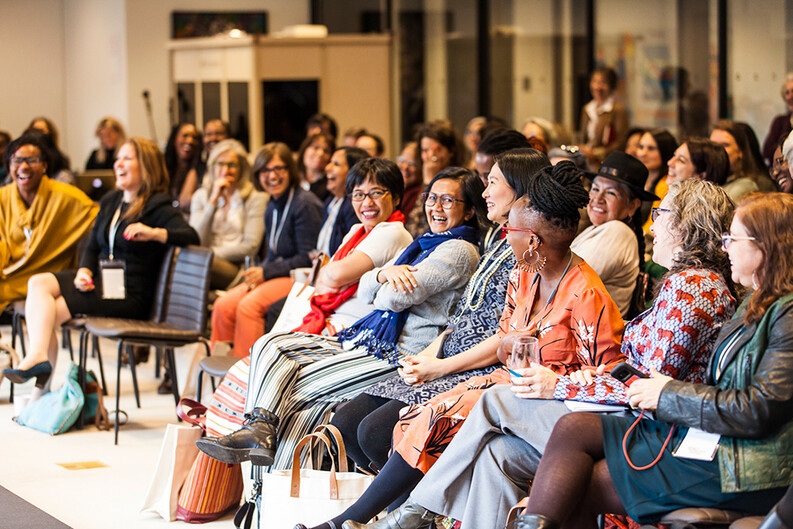
When the National Women’s Law Center was entering its first leadership transition in the organization’s more than four decades of fighting for gender justice, it received a gift that historically has been hard to come by in the philanthropic world: flexible funding.
The five-year, multi-million-dollar grant came from the Ford Foundation as part of the funder’s Building Institutions and Networks (BUILD) initiative, a $1 billion effort launched in 2016 to help nonprofits become stronger and more sustainable. Unlike a more typical “project grant,” which would require the National Women’s Law Center (NWLC) to spend the money in a certain way, by a certain time, for a specific purpose, Ford provided the money more generally for the organization’s infrastructure and operations. That, in turn, meant the NWLC was better prepared to fulfill its mission: In 2018, after the #MeToo movement gave rise to a newfound awareness of rampant sexual harassment and assault, the NWLC became home to the TIME’S UP Legal Defense Fund, which connects would-be plaintiffs with lawyers and helps defray the costs of litigating discrimination claims.
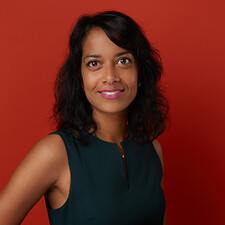
Nishka Chandrasoma ’06
“It’s not just about providing grantees with flexibility or recognizing the importance of supporting institutional strength,” says Nishka Chandrasoma ’06, Ford’s Vice President, Secretary, and General Counsel. “It’s also an attitude shift. The grantees are the experts. The role of the funder is to support them and give them the capacity to deal with the issues.”
Ford’s BUILD initiative is just one example of the changing dynamics of philanthropy, according to Chandrasoma and other Yale Law School alumni who advise or serve in leadership positions at some of the largest and most influential foundations in the country. In addition to more flexible funding, which is part of what has been called the “trust-based philanthropy” model, foundations and funders are working together — and with for-profit entities — more than ever before, pooling their expertise and resources to advance collective public-interest goals. And, to do so, they are increasingly turning to a tool more traditionally relied upon in the private sector: data.
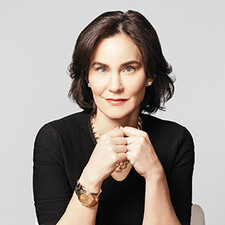
Laura Arnold ’00
“In everything that we do, we start from basic principles and ask the fundamental, but bigger, questions that often are overlooked,” says Laura Arnold ’00, Founder and Co-chair of Arnold Ventures, an umbrella LLC organization created in 2019 by Arnold and her husband John to oversee their family’s philanthropic and political expenditures. “That is how transformative change happens.”
And, within the field of philanthropy, transformation is exactly what has occurred.
“It’s been a tremendous time of change in philanthropy,” says Carol S. Larson ’78, who recently stepped down as President and Chief Executive Officer of the David and Lucile Packard Foundation.
Larson’s first introduction to what she calls “giving away other people’s money” came when she was working at a nonprofit focused on the rights of children with disabilities and was asked to distribute $6,000 for a donor who wanted to fund student service projects at a local university.
“I remember calling my parents and saying, ‘I just helped give away $6,000,’” she recalls, laughing. “I had no idea I would eventually have a career in philanthropy.”
Forming Alliances
Larson says she definitely saw an increase in collaboration among funders in her 31 years with the Packard Foundation, including 16 at the helm. That only makes sense, she says, given the “size of the goals we’re taking on.” (Packard’s areas of focus include fighting climate change, providing access to early learning, advancing reproductive rights, ensuring a better future for the ocean, and helping farmers.)
“You do need the benefit of others,” she says.
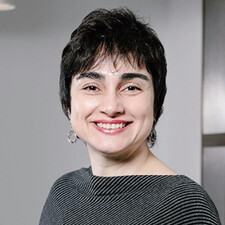
María Santos Valentin ’87
María Santos Valentin ’87, General Counsel and Corporate Secretary of the Rockefeller Foundation, agrees.
“As a general matter,” there’s been a shift away from “the idea that philanthropy can do things on its own,” Valentin says. “As time has gone on and there are a lot more foundations, things are a little bit more dispersed. What becomes important is being creative in thinking through what are the particular areas where you can have an impact.”
Two of the joint efforts Larson is most proud of are ClimateWorks, which Packard, the William and Flora Hewlett Foundation, and the McKnight Foundation created in 2008 with the goal of giving away more than $1 billion toward mitigating climate change; and the Collaborative for Gender and Reproductive Equity, created in 2018 in conjunction with other funders, including Ford, to advance women’s rights in the United States.
“It’s really about aligning strategies and learning from each other,” Larson says.
A Deep Dive into Data
In addition to combining forces to combat systemic problems, foundations are becoming more empirical in their approach. At Arnold Ventures, which focuses on four issue areas (criminal justice, health, education, and public finance), data is at the heart of all giving. That’s because when the Arnolds started their foundation in 2010, they felt there wasn’t enough reliable research to make informed decisions about who or what to fund and why.
“We always talk about the process of navigating a spectrum from idea generation to policy change,” Laura Arnold says. “We view it as a process that includes finding the right interventions, testing those interventions, and then looking to scale the successful models. But to do that process correctly and effectively, you must maintain fidelity to the data.”
Arnold Ventures funds research replication projects to draw attention to the fact that not all data is created equal (one showed that only 40 percent of psychology findings in top journals could be definitively recreated); asks its grantees to adhere to guidelines promoting transparency and openness in their own projects; and distributes grants for randomized controlled trials. The organization then pushes for solutions based on what the research suggests will work.
In 2019, the Trump Administration cited an Arnold Ventures-funded study when it proposed new rules designed to increase accountability and availability in the nation’s organ supply. The study had showed that reforms to the organ transplant system could save 25,000 lives per year and $13 billion in taxpayer funds over five years.
“It’s safe to say that Arnold Ventures has had a significant impact on this country’s approach to research itself,” Arnold says. “There was not a broad-based conversation taking place on the topic of ‘research integrity’ when we first started our philanthropy, but it’s now a common theme that’s being openly discussed.”
Other foundations are taking a different approach to integrating more data into philanthropic and nonprofit work. In 2016, Ford created a Technology Fellows program that embeds people with expertise in data use in its grant-making teams; in January, Rockefeller announced it had partnered with Mastercard’s Center for Inclusive Growth to launch DATA.org, which aims to build the field of data science for public good and follows the $50 million Data Science for Social Impact Collaborative the two entities launched in 2019.
So far, the Rockefeller-Mastercard collaboration has been used to help a university identify and offer assistance to students who are at risk of dropping out of school and to help bring customers to black-owned businesses in New Orleans. As part of the DATA.org launch, Rockefeller and Mastercard also announced a $10 million challenge seeking data science solutions to improve access to capital, ensure productive employment, and make cities more inclusive and sustainable.
“We have a data and tech team looking specifically at these issues, both within the foundation and for the social sector generally,” Valentin says. “How can we incentivize data scientists to provide services to the social sector, and not just the Facebooks of the world?”
Empowering Grantees with Flexible Funding
In general, Larson says philanthropy became “much more professionalized,” including with greater attention to quantifying and measuring the impact of grantmaking, during her three decades in the field. The recent move toward providing more flexibility in the funder-grantee relationship is a “nice self-correction,” she says — a recognition that grantees need “the ability to change their minds without fear of losing their funding.”
“It started with philanthropists understanding the basic power imbalance they have with those they support and asking how often does that get in the way of actually doing good and effective work,” she says.
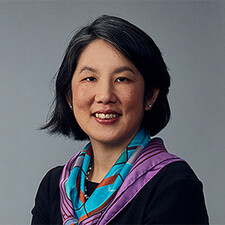
Jean L. Tom ’02
Jean L. Tom ’02, who advises philanthropists and foundations as a partner at Davis Wright Tremaine in San Francisco, agrees. She says some of her foundation clients — in compliance with relevant tax laws — have moved away from requiring grantees to document the impact of every grant dollar with customized reports and are asking for “check-in meetings” instead.
“With reports, there’s no opportunity to have a dialogue or for the philanthropist to engage with the grantee over what worked, what didn't work, and what the grantee truly needs to achieve the change that both the grantor and grantee are seeking,” she says. “Rather than act like the philanthropists with money have all the answers, it becomes more of a partnership in learning. You’re trying to drive impact together.”
At Ford, Chandrasoma says, the BUILD initiative came about because “we wanted to have an initiative to put our money where our mouth is — instead of just talking about flexibility to actually operationalize it,” she says.
BUILD put Ford’s grantmaking staff on the hook for spending part of their budgets on five-year, flexible grants that help organizations plan for their long-term future. BUILD grantees also agree to undergo an organizational assessment and an analysis of their finances.
In order to save their finite budgets for mission-related work, nonprofits often put off “unsexy things,” like information technology systems, human resources, and accounting, Chandrasoma says.
“We’re trying to protect them from all the factors that disincentivize focusing on long-term organizational health and sustainability,” she adds.
The National Women’s Law Center called the BUILD grant it received from Ford “transformational.” Under the leadership of its new — and first Black — Chief Executive Officer Fatima Goss Graves ’01, the organization has used the funds to invest in staff development, including anti-bias training; adjust its recruiting practices to bring on more people of color; and bolster its human resources team.
“None of this would have been possible” without the BUILD grant, the organization wrote on its blog.
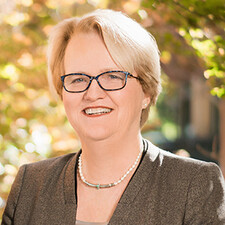
Carol S. Larson ’78
Changes are coming to more traditional grants as well. In September — in another example of collaboration — Ford, Packard, and three other foundations announced they would allocate more money for grantees’ essential operating costs in project-specific funding. Historically, foundations have allowed grantees to use 10 percent of a project grant’s total value for the actual costs of running their organizations. But, in recent years, nonprofit leaders pushed back, saying, “‘I need your money, but you’re starving us,’” Larson explains.
“We needed to change the narrative — this idea that somehow if you’re a nonprofit that means you have to scrape things together and make do with very little,” she adds. “Really effective, long-lasting nonprofits need to be supported in their financial health.”
This spring, in response to the novel coronavirus COVID-19, Ford spearheaded and Packard and several hundred other organizations signed a pledge to loosen or eliminate restrictions on existing grants and to make future grants as flexible as possible to help nonprofits respond to the economic and public health consequences of the pandemic.
“Crisis is the mother of invention,” Larson says. “It could be that this will show us this is a better way to do business.”
The Path to Philanthropy
In philanthropy, lawyers have a unique opportunity to make an impact by helping direct resources to where they are needed most. Chandrasoma went to Yale Law School thinking she would pursue public-interest law. Her work as the general counsel of a major foundation fulfills that desire in a more indirect way.
“So much of what [grantmaking staff] want to achieve is why I went to law school,” she says. “And even though I’m not doing that directly myself, to work with other people who make that their day-today objective is incredibly satisfying.”
Valentin, Arnold, Chandrasoma, Larson, and Tom all found their way into philanthropy at different stages of their careers and come from different professional backgrounds. But they each credit Yale Law School with helping cultivate their interest in public service generally. Tom says her experience in the Community and Economic Development and Housing clinics was especially formative.
“The clinics were my home, allowing me to distinguish what I enjoyed about lawyering from what I didn’t enjoy,” she says, adding that she “really loved the constructive aspect of advising and building nonprofits as part of the solution" to intractable community problems.
More than the content of specific courses, the alumni say they draw most on a particular way of thinking that they learned at Yale Law School.
“It’s not only looking at the legal solution but what are the larger-picture things that are important, that should be put into the mix,” Valentin says. “It’s about being a thought partner so that you can actually help with systems change.”
Arnold agrees.
“At YLS, learning black letter law was the beginning of the journey, not the ultimate objective,” she says. “We were empowered to think not so much about what was the law, but rather about what the law should be. That spirit of questioning, of not constraining oneself to what currently exists, is something that I’ve brought with me to Arnold Ventures.”
By Rebecca Beyer


